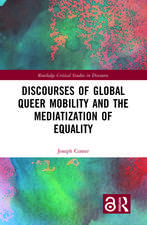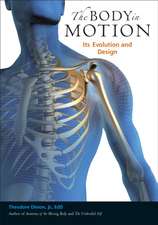Mammalian Cell Culture: The Use of Serum-Free Hormone-Supplemented Media
Editat de Jennie Matheren Limba Engleză Paperback – 31 ian 2012
Preț: 368.37 lei
Preț vechi: 387.75 lei
-5% Nou
Puncte Express: 553
Preț estimativ în valută:
70.52€ • 73.58$ • 59.11£
70.52€ • 73.58$ • 59.11£
Carte tipărită la comandă
Livrare economică 12-26 martie
Preluare comenzi: 021 569.72.76
Specificații
ISBN-13: 9781461593638
ISBN-10: 1461593638
Pagini: 304
Ilustrații: XVIII, 284 p.
Dimensiuni: 152 x 229 x 16 mm
Greutate: 0.41 kg
Ediția:Softcover reprint of the original 1st ed. 1984
Editura: Springer Us
Colecția Springer
Locul publicării:New York, NY, United States
ISBN-10: 1461593638
Pagini: 304
Ilustrații: XVIII, 284 p.
Dimensiuni: 152 x 229 x 16 mm
Greutate: 0.41 kg
Ediția:Softcover reprint of the original 1st ed. 1984
Editura: Springer Us
Colecția Springer
Locul publicării:New York, NY, United States
Public țintă
ResearchCuprins
1 Serum Factor Requirements for the Initiation of Cellular Proliferation.- Multiple Serum Components Required for Cellular Proliferation.- EOF and Somatomedin C Can Replace the GQ/GI Progession Activity of PPP.- EGF and Somatomedin C Reduce the Minimum Gi Transit Time.- Availability of Free Somatomedin C Controls Minimum Gi Transit Time.- Somatomedin C Regulates Progression of Late Gi Phase and Commitment to DNA Synthesis.- EGF Is Required during Traverse of Early Gi.- Summary and Conclusions.- References.- 2 Regulation of Fibroblast Growth by Multiple Growth Factors in Serum-Free Medium.- In Vitro Models of Growth Regulation—Why Do Cells Arrest Their Growth?.- Neoplastic Transformation and Relaxed Growth Regulation.- Replacing Serum with Defined Medium Components to Study Growth Regulation In Vitro.- Combinations of Growth Factors Are Required in Defined Media to Support Cell Proliferation.- Mechanism of Growth Factor Action—Events Stimulated by Growth Factors Prior to DNA Synthesis.- Comparison of the Growth Factor Requirements of Normal and Transformed Cells Grown in Serum-Free Media.- Conclusion.- References.- 3 Growth and Differentiation of Preadipocyte Cell Lines in Serum-Free Medium.- Results and Discussion.- References.- 4 Growth and Differentiation of Human Myelomonocyte Leukemia Cell Lines in Serum-Free Medium.- Human Myelomonocytic Cell Lines.- Growth of HL-60 in Defined Medium.- Differentiation of HL-60 in Defined Medium.- Involvement of Intracellular Cyclic Adenosine 3?:5?-Monophosphate (cAMP) in Differentiation of HL-60.- Differentiation Effects of Agents That Increase Intracellular cAMP on HL-60 Primed with RA.- Growth and Differentiation of Other Myelomonocytic Cell Lines in Defined Medium.- References.- 5 In Vitro Immunization and Growth ofHybridomas in Serum-Free Medium.- In Vitro Immunization.- The Role of Serum.- Thiols.- Cellular Interactions and Soluble Factors.- Serum-Free Media.- Conclusion.- References.- 6 Kidney Cell Cultures in Hormonally Defined Serum-Free Medium.- Kidney Cell Culture in Serum-Supplemented Medium: MDCK and LLC-PKl as Model Systems.- Advantages of Kidney Cell Culture.- Limitations on Transport Studies with Kidney Cell Culture Imposed by Serum.- Limitations of Studies with Established Kidney Cell Lines: Importance of Primary Kidney Cell Culture.- Primary Kidney Culture and Hormonally Defined Medium.- Primary Culture of Specific Kidney Cell Types.- Use of Hormonally Defined Serum-Free Medium to Grow Specific Cell Types in the Kidney: The Concept of Selective Media.- Use of Primary Kidney Cell Culture to Study Medically Related Problems of the Kidney.- References.- 7 Rat Hepatocytes in Culture: A Model for Studies of Growth Control during Experimental Chemical Hepatocarcinogenesis.- Control of DNA Synthesis in Cultures of Adult Rat Hepatocytes.- Factors Required for the Induction of DNA Synthesis.- Platelet-Derived Growth Factor as an Inhibitor of Normal Hepatocyte DNA Synthesis.- Stimulatory Activity for Normal Hepatocyte DNA Synthesis in the Serum from Cancer Patients and Carcinogen-Fed Rats.- Altered Response of Hepatocytes from Carcinogen-Treated Rats to PDGF.- Discussion.- References.- 8 Intratesticular Regulation: Evidence for Autocrine and Paracrine Control of Testicular Function.- Testicular Cell Culture.- Autocrine Regulation of Testicular Cells.- Cell-Cell Interaction in the Testis.- Summary and Model of Intratesticular Regulation.- References.- 9 Attachment Factors in Cell Culture.- Collagen.- Fibronectin.- Laminin.- Chondronectin.- Serum-Spreading Factor.- Epibolin.- Fetuin.- Extracellular Matrix in Cell Culture.- Future Trends: Studies of Cell Shape and Cell-Substratum Interactions.- References.- 10 Cell Culture Studies Using Extracts of Extracellular Matrix to Study Growth and Differentiation in Mammalian Cells.- Background on Extracellular Matrix.- Cell Culture Methods Using Crude Extracts of Extracellular Matrix.- The Future.- References.







